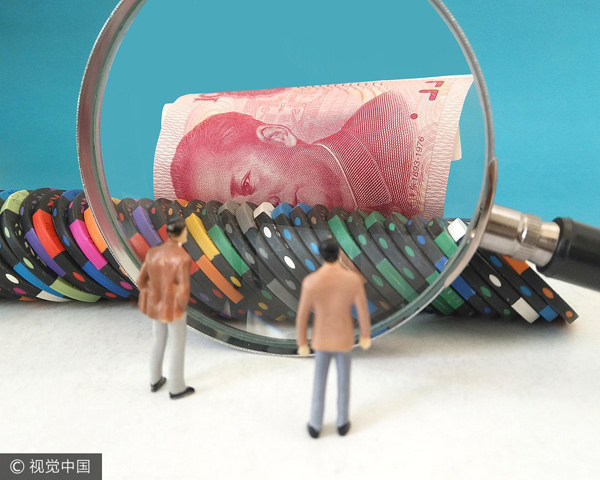Watch out for 'grey rhino' in jungle of financial risks

BEIJING - Every major economy has its own "grey rhinos" - big and neglected economic risks.
In China's case, it is the rapid build-up of financial risks caused by debt-fueled investment growth, as People's Daily, the mouthpiece of the Communist Party of China, warned after a major financial work conference.
US policy analyst Michele Wucker coined the term "grey rhino" to depict highly visible, high-impact threats that people should see coming, but often do not.
It helps decision makers recognize obvious issues and act early to stop these problems from getting out of control, the Chicago-based author explained.
Chinese authorities are obviously on guard.
The Chinese economy ended the first half of 2017 on a solid note, but concerns about the country's financial and debt risks remain serious.
The last round of economic expansion fueled by easing of the monetary policy has generated a string of side-effects: excessive leverage, the lacking role of the financial sector in the real economy and inadequate financial regulation in the face of rising moral hazard.
Never underestimate the cyclical, structural, and institutional risks facing the Chinese economy. Never downplay the spillover effects of financial woes into other economies as global markets are interconnected now more than ever.
Fully aware of the risks, the Chinese leadership is focused on tackling deep financial risks and sparing no efforts to address financial irregularities.
At the financial work conference, the leadership has the consensus that guarding against systemic financial risks is the eternal theme of financial work and the government should take a stronger initiative to monitor, warn against, and deal with risks in a timely manner.
The creation of a "super regulator" shed light on the new thinking of the central government in addressing financial woes. With the central bank given a bigger role, this new committee will enhance coordination and improve weak links in financial oversight.
China's financial risks are generally under control and the economy is equipped with ample ammunition to neutralize the risks.
The Chinese economy grew faster than expected in the second quarter with rebalancing efforts showing visible progress. A sound and stable macro-economic outlook has created room for regulators to intervene.
The economy is also backed by banking assets worth nearly 232 trillion yuan ($34.12 trillion), the largest in the world; its stock market is valued at about 52 trillion yuan; its public and private offered funds are worth 18 trillion yuan. Its insurance asset value is close to 16 trillion yuan.
Regulators have not scaled down efforts to ward off risks. The central bank has adopted a macro-prudential assessment. The securities regulator has harshly punished a number of listed firms for illegal acts. Banking and insurance regulators have taken varied measures to keep risk in the sectors under control.
Wucker stated that a prime example of an ignored "grey rhino" is the 2008 financial crisis, which prompted many countries to loosen monetary policy and flooded their economies with cheap lending.
"If we do not address the unintended consequences, we are in for another huge fall," she said.
Global finance is a network in which everything is connected to everything else. As China strengthens its financial security, it will act as a stabilizer in the global financial safety net.









